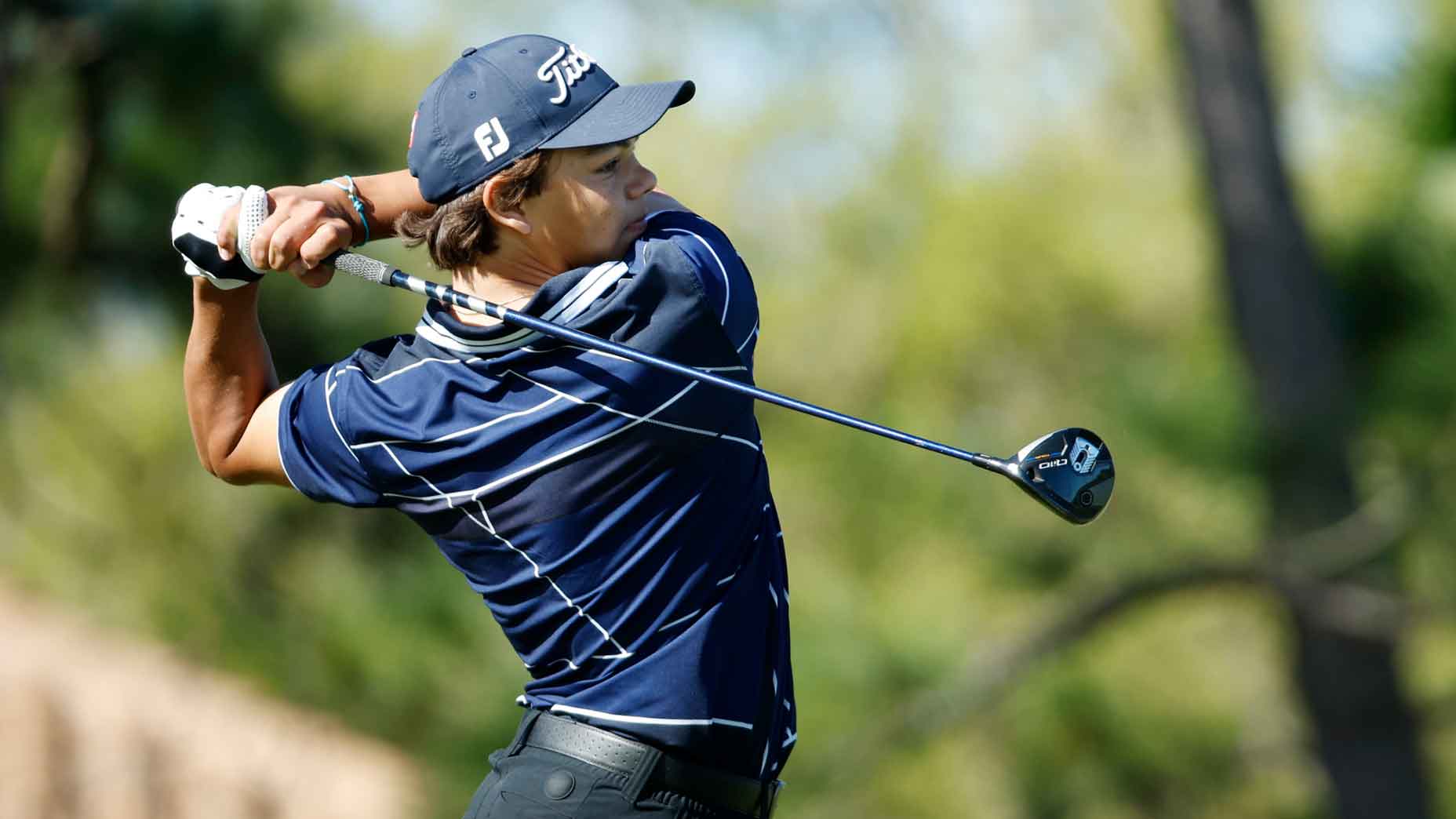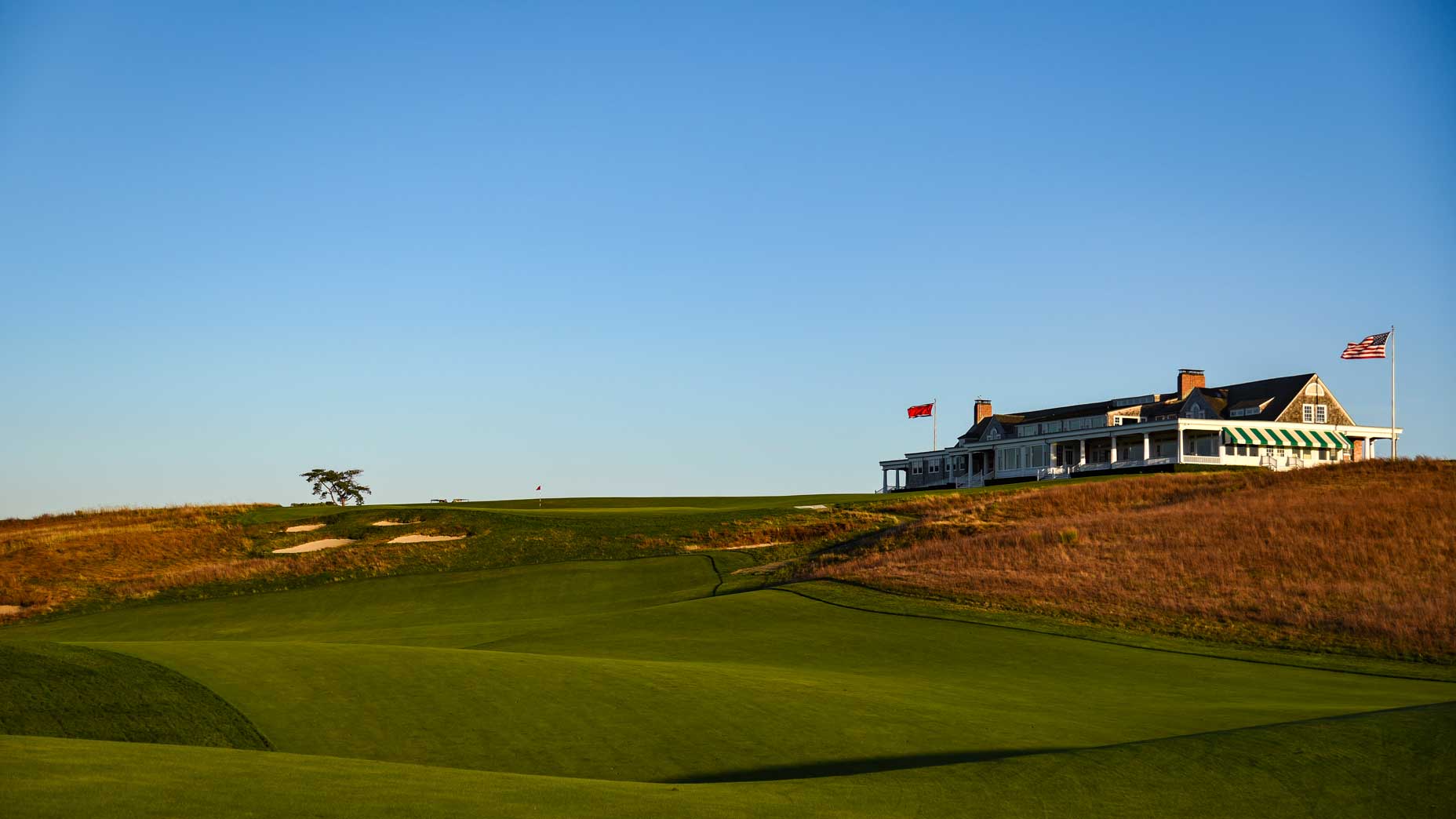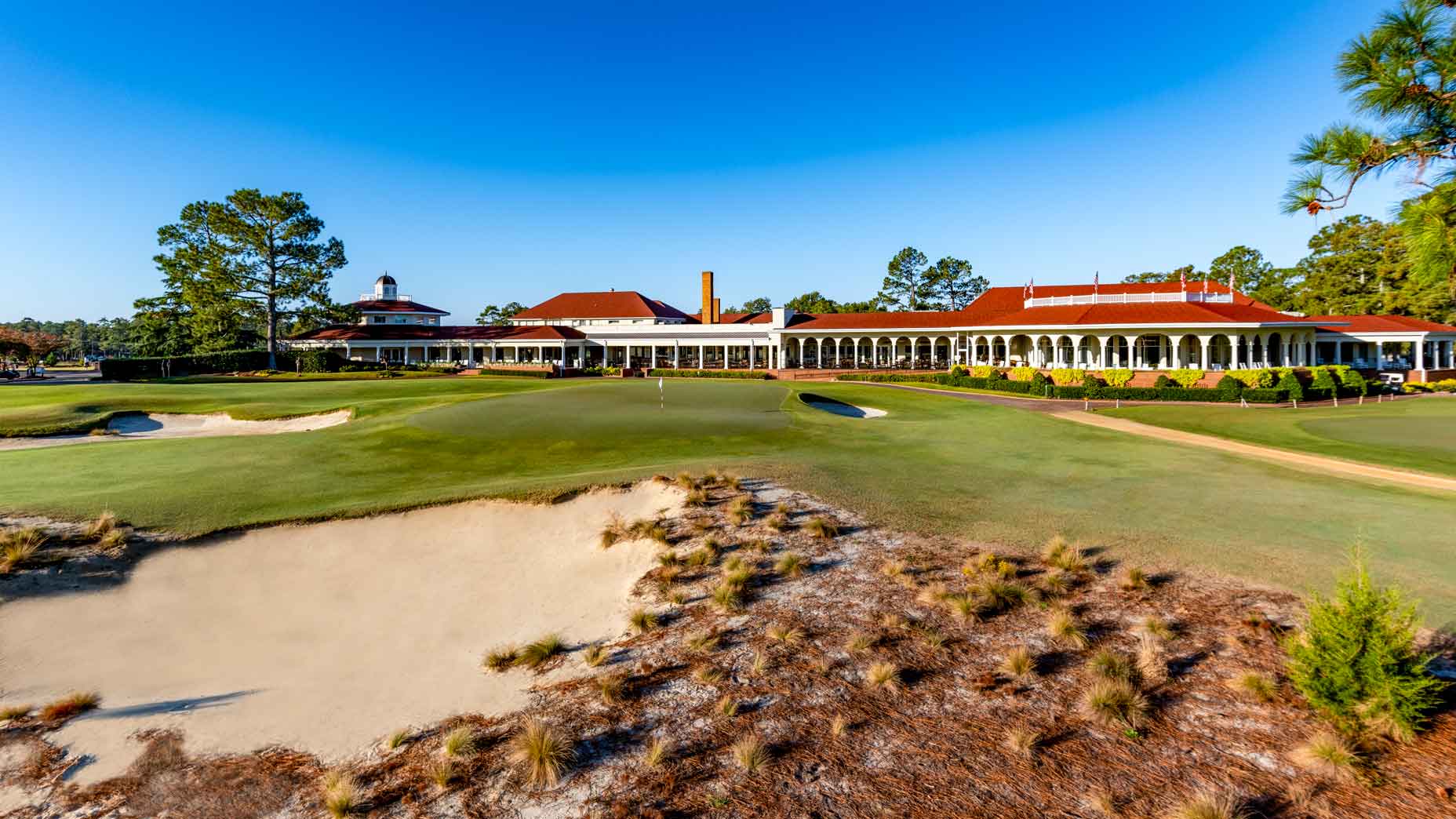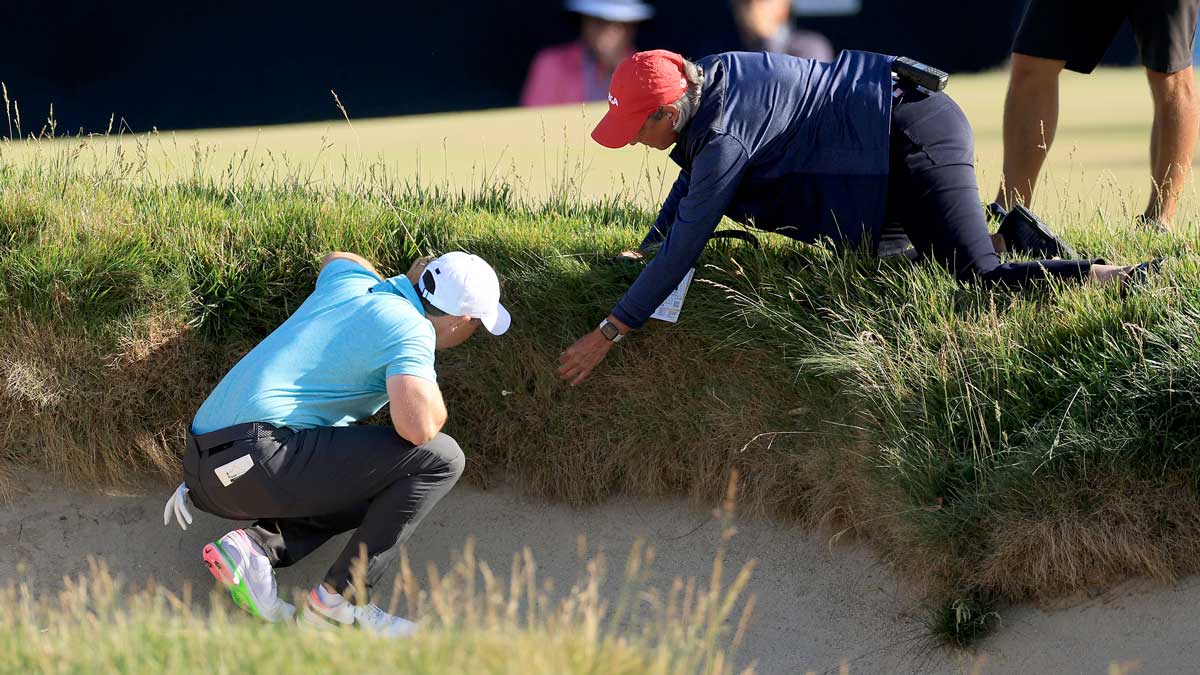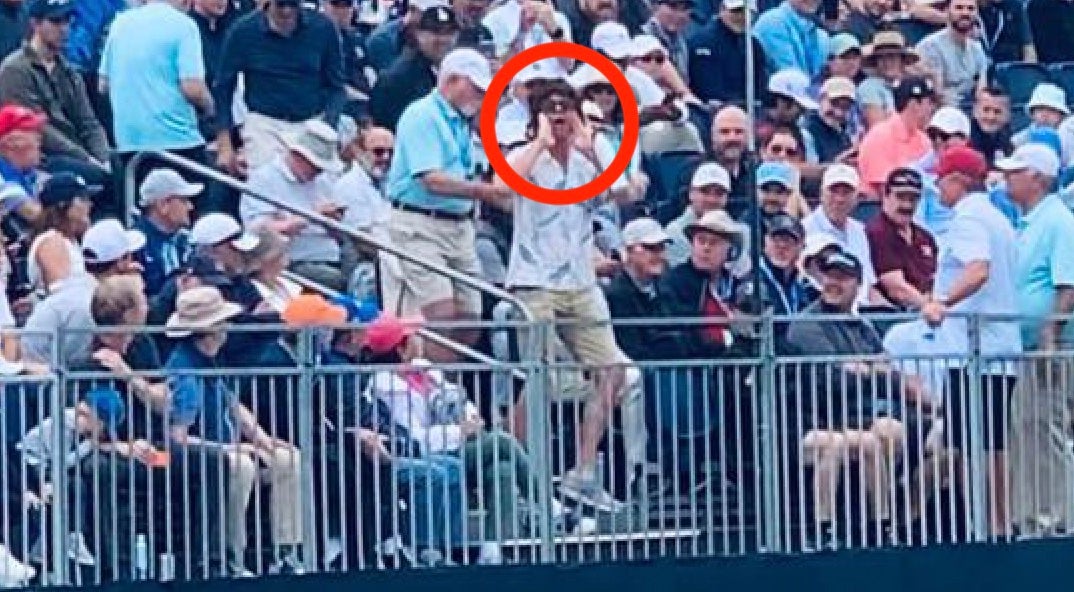Lessons from LA: The perfect golf hole, billion-dollar views, frantic volunteers and more
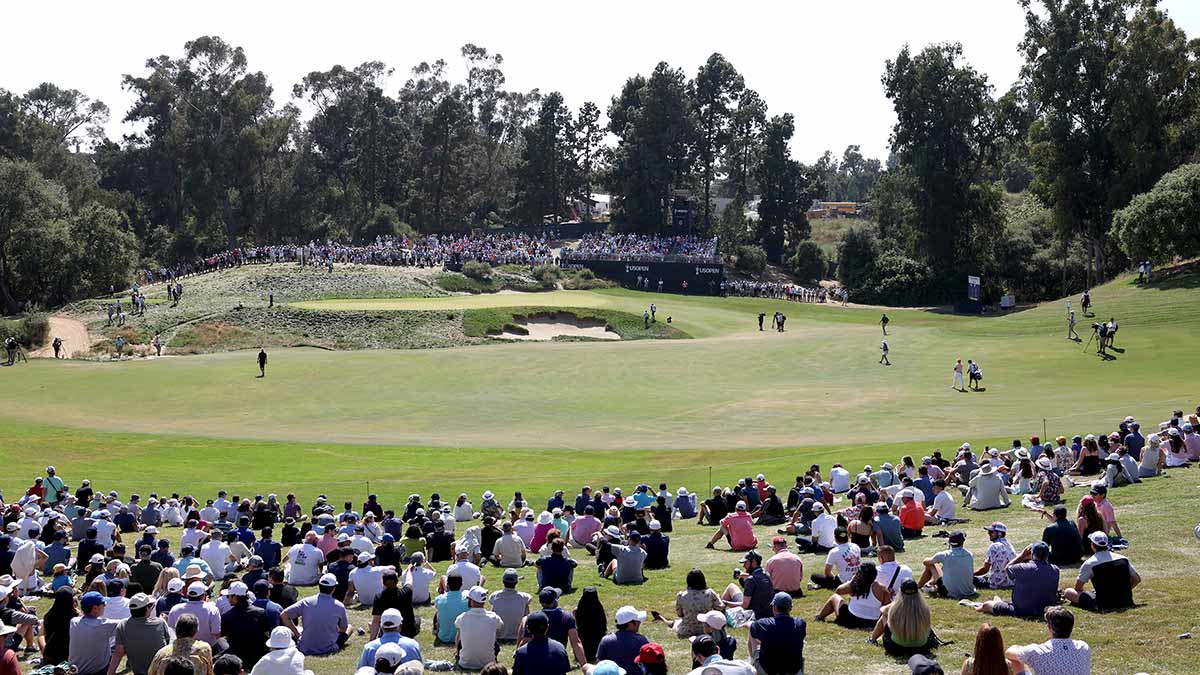
The par-4 6th hole at Los Angeles Country Club's North Course.
Getty Images
At the 2023 U.S. Open, Wyndham Clark won and Rory McIlroy fell short, but there was lots more to remember beyond those headlines. Here, our staffers clean out their notebooks in our Lessons from Los Angeles.
The perfect golf hole?
By James Colgan
If you find yourself in a certain cross-section of the golf community — under 40, overly active on Twitter, with any sort of opinion on the number of commercials shown during a golf telecast — it’s likely you also find yourself a fan of the drivable par-4.
The hole template has found itself in the main vein of golf architecture in the 21st century; a beloved choice among those building (and caring about) golf courses. And though LACC was around long before course-design Twitter, the 300-yard 6th hole at the North Course gives those who gush over the short 4 reason to fully swoon.
It took me nearly all of tournament week to get out to the 6th, but I finally plopped down atop its massively raised fairway as the leaders strolled through on Sunday afternoon. What I found was what I believe to be the perfect golf hole: a true, do-or-die challenge with any number of potentially fatal options.
Those who attempted to carry the trees and drive the postage-stamp green were faced with two options: make it have a good shot at eagle, or miss and scramble hard for par. Those who laid up were faced with a difficult shot from the bottom of the bend in the fairway, with only five yards of margin for error on either side of a baked-out green.
On Sunday, I watched the final two pairings come through. Scottie Scheffler and Rickie Fowler laid up but couldn’t wedge it close enough to make birdie. Rory McIlroy missed too far right and couldn’t get up and down for a 3. Wyndham Clark had the best shot of the bunch, landing it just short of the green in the heavy rough. He was lucky enough to escape from it and made birdie.
That, to me, is a perfect strategic hole: easy to make bogey, hard to make birdie, and lucky to make par. Too bad it didn’t come closer to the closing stretch.
America’s best ‘city’ golf course? It’s gotta be LACC
By Alan Bastable
The big-city vibes of this U.S. Open first hit me when I pulled into media parking last Tuesday morning. Usually at majors, reporters park their vehicles in fields, at suburban hotels or, when we’re really lucky, at the host course itself.
But at the inaugural U.S. Open at Los Angeles Country Club, we docked our Camrys and Sonatas in a six-level subterranean parking garage beneath Century Plaza Towers, a pair of 44-story office buildings about a six-minute shuttle ride from the course. It was my first reminder that this was a different kind of Open, but certainly not my last.
LACC is unique not only for its wondrous George C. Thomas design and intensely private nature but also for its location — in a 320-acre valley abutting Beverly Hills that is said to have a “true land value” of roughly $8 billion. The coast is about a 20-minute drive west of the club and the heart of downtown L.A. about a half hour east, but the neighborhood in which LACC sits is far more bustling than beachy.
Players last week used more than just palm trees as aiming lines — they also targeted hotels, apartment buildings and cranes. The course almost has a Golden Tee feel, in that you can’t quite believe that it exists where it does.
Several other Top 100-grade courses are in or on the edge of major metropolises — Chicago GC and San Francisco GC come to mind — but none are encircled by skyline views quite like LACC. The Wynn, in Vegas, and both Liberty National GC and Bayonne GC, on the New Jersey side of New York Harbor, serve up killer cityscapes but in terms of architectural pedigree neither is in the same class as LACC’s North Course.
Does this make it America’s best “city” course? Yes, we’re ready to declare it so.

Back to the future — of golf
By Sean Zak
Tommy Fleetwood shot the round of the day Sunday at Los Angeles Country Club, a 63 that should have been a 62. Maybe even a 61 if he didn’t horseshoe a putt on the 1st. Shortly after putting out on 18, his caddie, Ian Finnis, described the round to a few media members as “machine-like,” which we can all understand, but then offered five other words that are harder to fathom: “Could have been a 59.”
A 59 in a U.S. Open? I was gobsmacked. But I suppose it could have happened. That 63 featured a bogey, after all. While Fleetwood signed his scorecard with tournament officials, another figure appeared in scoring.
“Sergio!” Finnis exclaimed. He was happy to see Mr. Garcia, captain of the Fireballs over on LIV Golf. In a normal world, there wouldn’t have been as much pep in his voice. This would be normal happenstance. But golf hasn’t been a normal world. Finnis hadn’t seen Garcia in quite some time.
They did as pro golfers and caddies do — made small talk about rounds played and upcoming schedules. It ended with Finnis saying, “We’ll see you at The Open,” which brought Sergio some pause. He isn’t in The Open yet. Garcia still needs to qualify in the coming weeks, just like he did for LACC. Such is the weird normal we exist in at the moment, where we could have a Sergio-less Open for the first time since 1997 when he was a wide-eyed 17-year-old amateur. Garcia is one of the 60 best golfers in the world and absolutely should be at Hoylake, but he’s ranked 197th by the OWGR.
Conveniently enough, Garcia will try and qualify at West Lancashire, in Liverpool, which got Finnis awfully excited. He lives just a few hundred yards from the course. Sergio smiled and made one of those half-serious, half-kidding asks: “Would you like to caddie?”
Fleetwood’s schedule will keep Finnis too busy for any extra looping, but it was genuinely nice to see Garcia intermingling once again among the Tour faithful. There wasn’t a black cloud hanging over this U.S. Open, to quote Brooks Koepka from a year ago at Brookline. When Koepka was grouped with Rory McIlroy, there wasn’t any extra meaning to their performances based on the tours they represent. Claude Harmon chatted away with Eamon Lynch, a writer whose work he had ranted about to GolfWeek just a month ago.
Jon Rahm and Phil Mickelson practiced together on Wednesday. Then Mickelson and Padraig Harrington teed it up in the competition on Thursday. On Friday, Harrington mentioned how it was nice to catch up with Mickelson once again, purposefully avoiding the topic of the future of golf. But on that note, Harrington was asked if Mickelson would be welcomed back on the Champions Tour. He stewed on the idea for 13 seconds before saying simply, “He’s my friend. So he’s got one welcome. There you go. I can always speak for myself.”
At U.S. Opens, be careful where you walk
By Josh Berhow
An afternoon stroll on Wednesday saw a foursome of Sergio Garcia, Ross Fisher, Jacob Solomon and Vincent Norrman playing LACC’s par-5 14th. From the far corner of the property, next to what used to be the Playboy Mansion, the players launched their balls into the air. Three found the left rough, landing between the fairway and a row of hospitality tents. One of those three barely trickled in, then disappeared, and the final ball hit was just inches from doing the same thing before staying on the short stuff.
It’s a crucial difference. At U.S. Opens, a fairway lie vs. a rough lie might seal your fate. Especially last week, where the rough was gnarly, and players were often forced to just hack out or lay up.
Here’s one example of the troublesome rough. As those players approached their drives on 14, three volunteers, despite being in good position when the balls landed, struggled to find them so they could mark with blue flags. They searched frantically, the whole time knowing the players were getting closer and closer.
Eventually they found one, then another, but there was still one missing. Anxiety kicked in.
The hospitality tent off the fairway, stocked with well-hydrated fans, was trying to help one volunteer spot the last one. Finally, he found it, turned to the fans and put both hands in the air, thumbs pointed upward. The crowd cheered.
It should be an easy job, one would think, finding golf balls and putting flags down near them, but not always.
“Man, it’s really hard,” said one of those volunteers on 14, taking a big deep breath before answering. “I play a lot of golf, and I tend to know where to look for balls, but there have been times when I have been five feet off. It’s amazing.”
I came across the same area days later and saw what looked to be the same volunteer once again getting a rousing ovation from the fans for finding and flagging a golf ball. Playing into the crowd, his celebration was a little more animated than a few days earlier. Turns out, this was a game within a game: Golf-ball hunting in the rough. Only at a U.S. Open.
What’s in a number?
by Dylan Dethier
As I watched the final few groups tee off on Sunday of the U.S. Open, one thing stood out: their age! In the final six pairings, only two players — Tom Kim and Scottie Scheffler — were under the age of 29.
This might not seem surprising to longtime golf fans, who are used to seeing pros peak in their late 20s and early 30s, but for years now we’ve been hearing that the youths have arrived to take over the PGA Tour with their confidence, their swing speed, their analytics, their joggers.
I’m not in denial that that’s happening. It just isn’t happening as quickly as we might have thought at our biggest events. Take a peek at the final standings and you’ll recognize that the average age of the top 20 at LACC was 31.6 years old. Just five of those 26 pros (Min Woo Lee, Tom Kim, Austin Eckroat, Collin Morikawa and Viktor Hovland) are 26 or below.
This sort of stuff seems to come in waves, and the waves are getting slightly younger with time. But it was intriguing that even the young, upstart winner making a name for himself — that would be Wyndham Clark — is 29 years old and just coming into his own. His closest competition Sunday came from 34-year-olds Rickie Fowler and Rory McIlroy, who tangled in a couple major championships in 2014, too. They were younger then. (That’s how this works, unfortunately.) And the youth movement of a few years ago, that of Viktor Hovland, Collin Morikawa and Matthew Wolff? Wolff wasn’t in the event, but the other two haven’t yet been replaced by a younger wave.
There weren’t many older players, either; 19 of the 26 guys to finish T20 or better are between 27 and 34 (though I’m cheating with Scheffler, who turned 27 on Wednesday). Just four players over the age of 40 made the cut, and just two (43-year-old Sergio Garcia and 51-year-old Padraig Harrington) finished inside the top 40.
It’s only a matter of time, of course, until the next youth wave comes. Some of ’em played this week. But the average age of the top 10 players in the world is 29.2. It’s still a solid mix of guys in their 20s and 30s. What’s the lesson here? The lesson is that I’m 31 — so I’m really still right in my prime. See you at Pinehurst.




